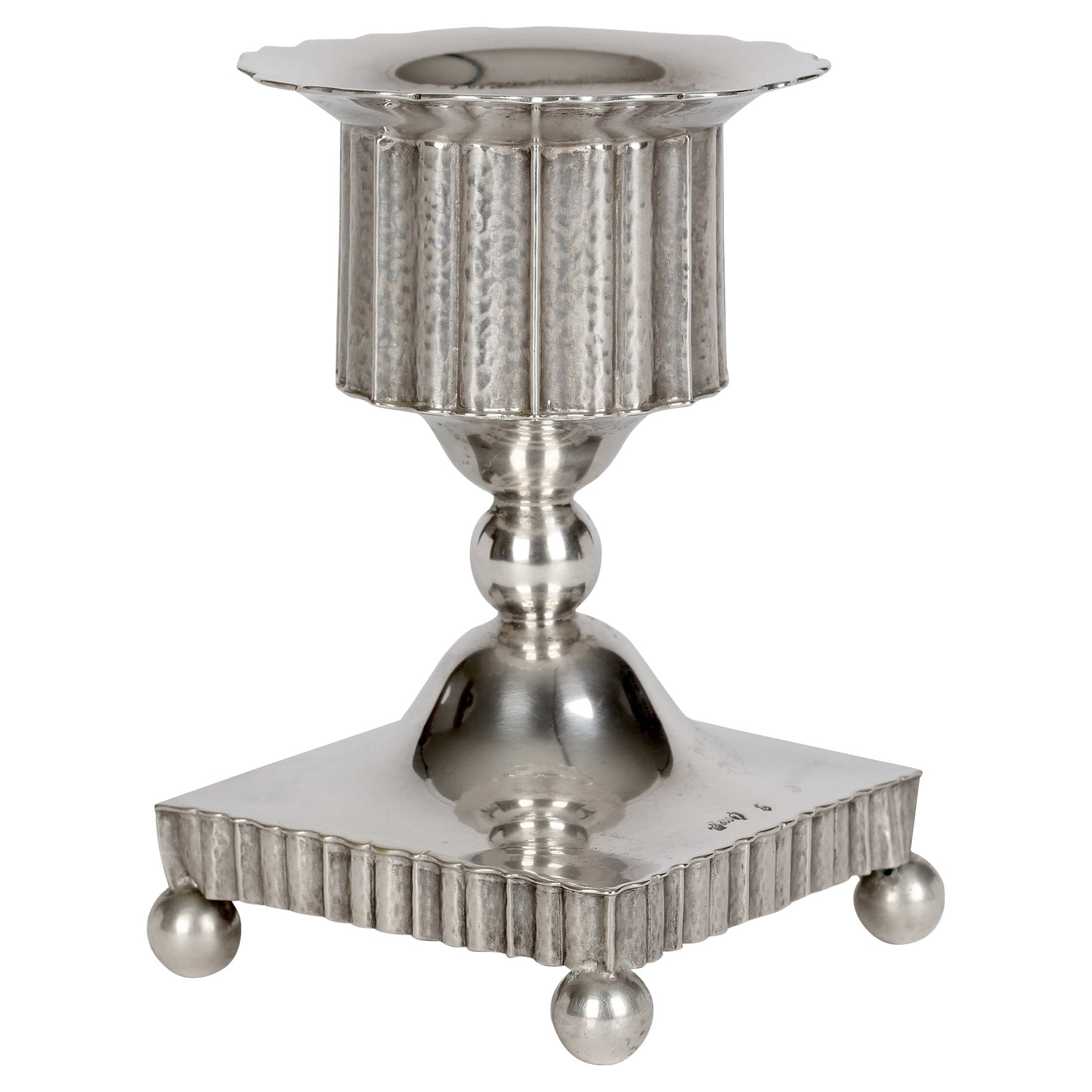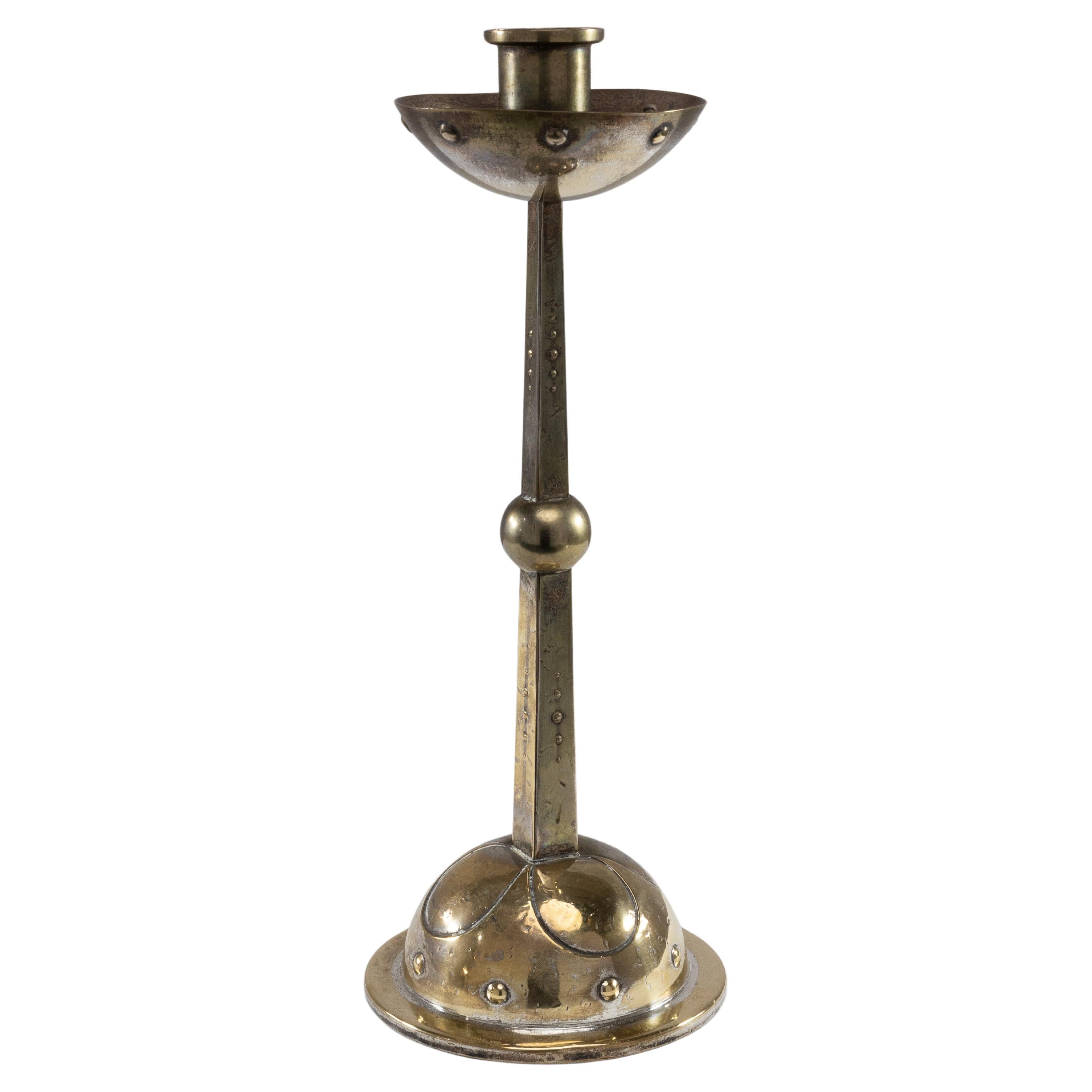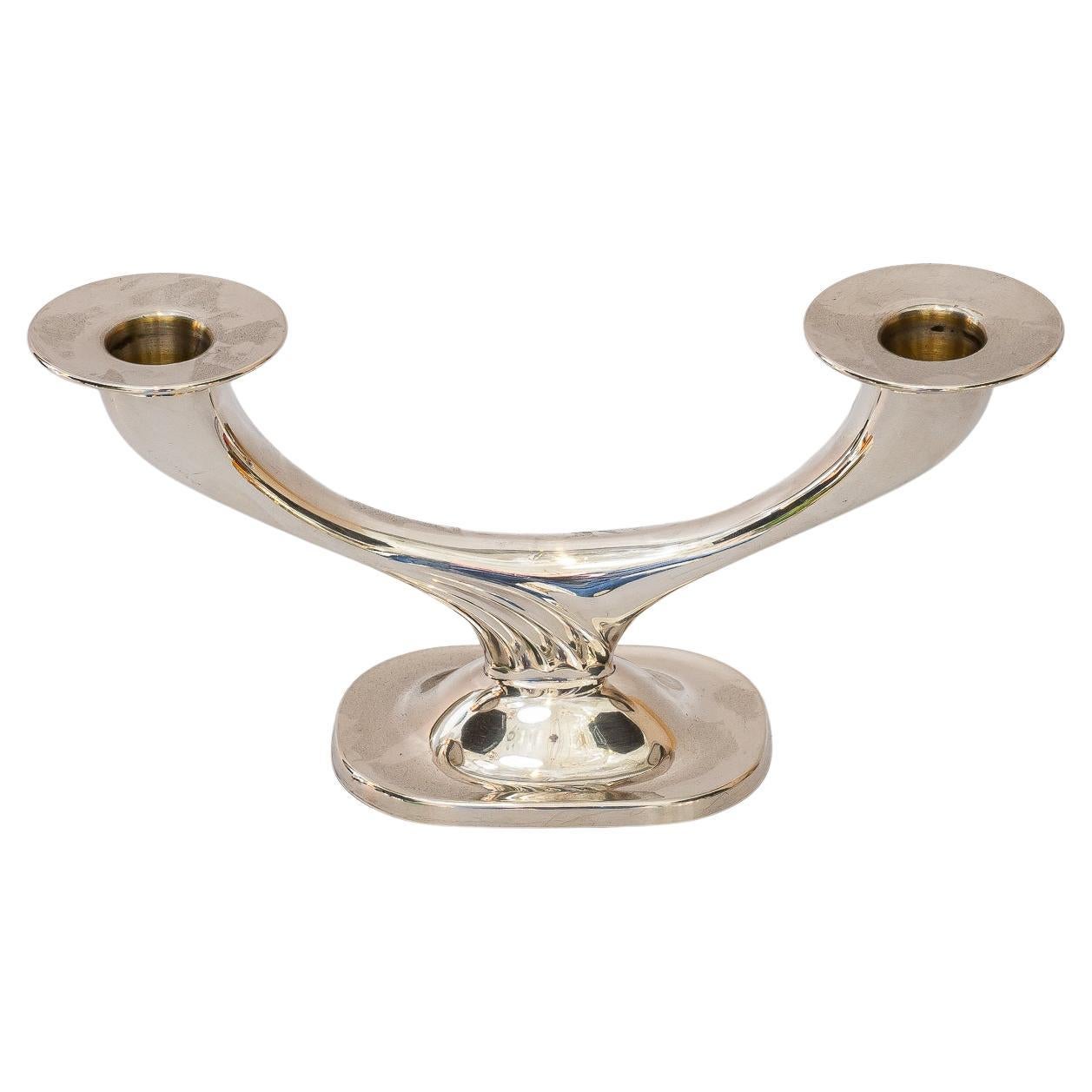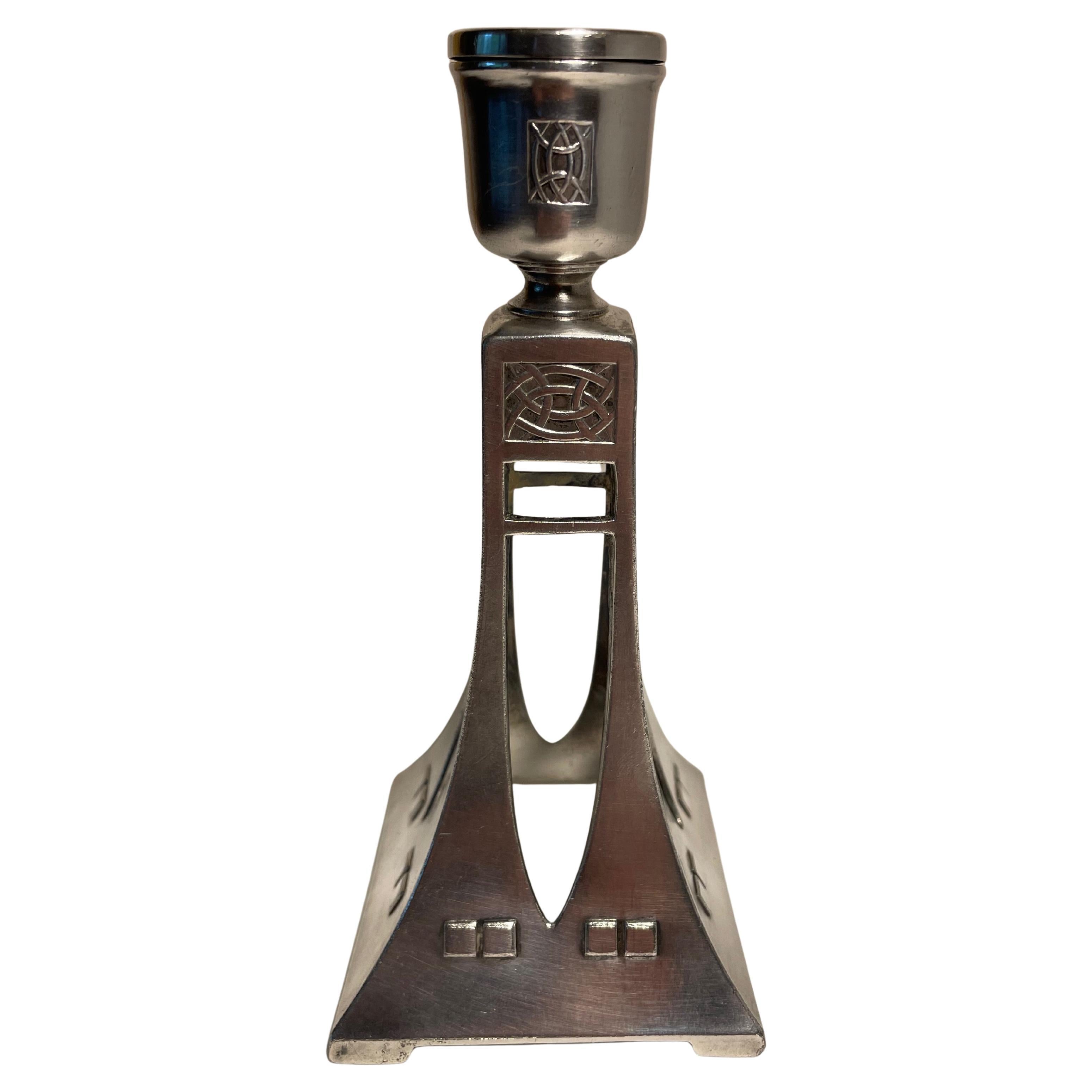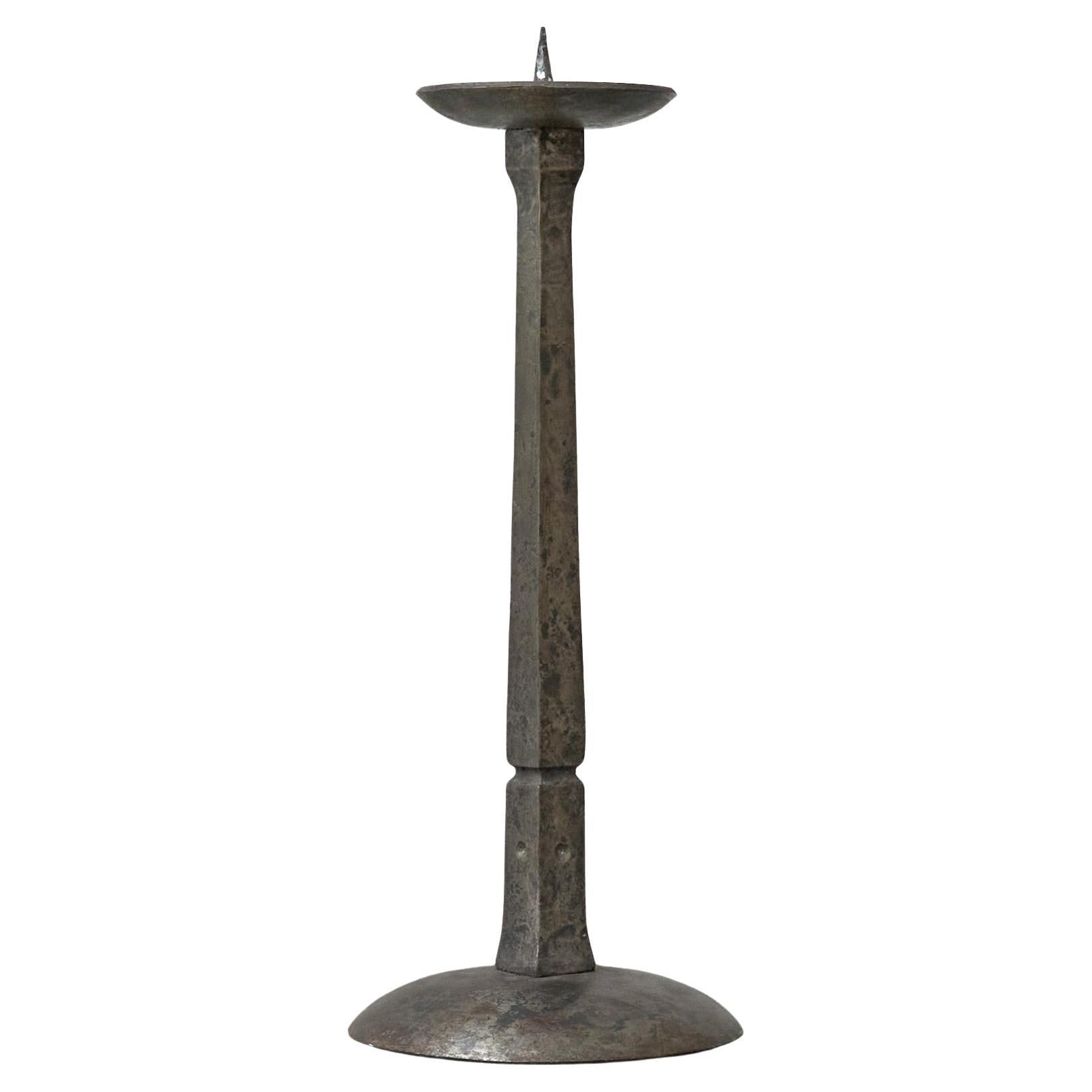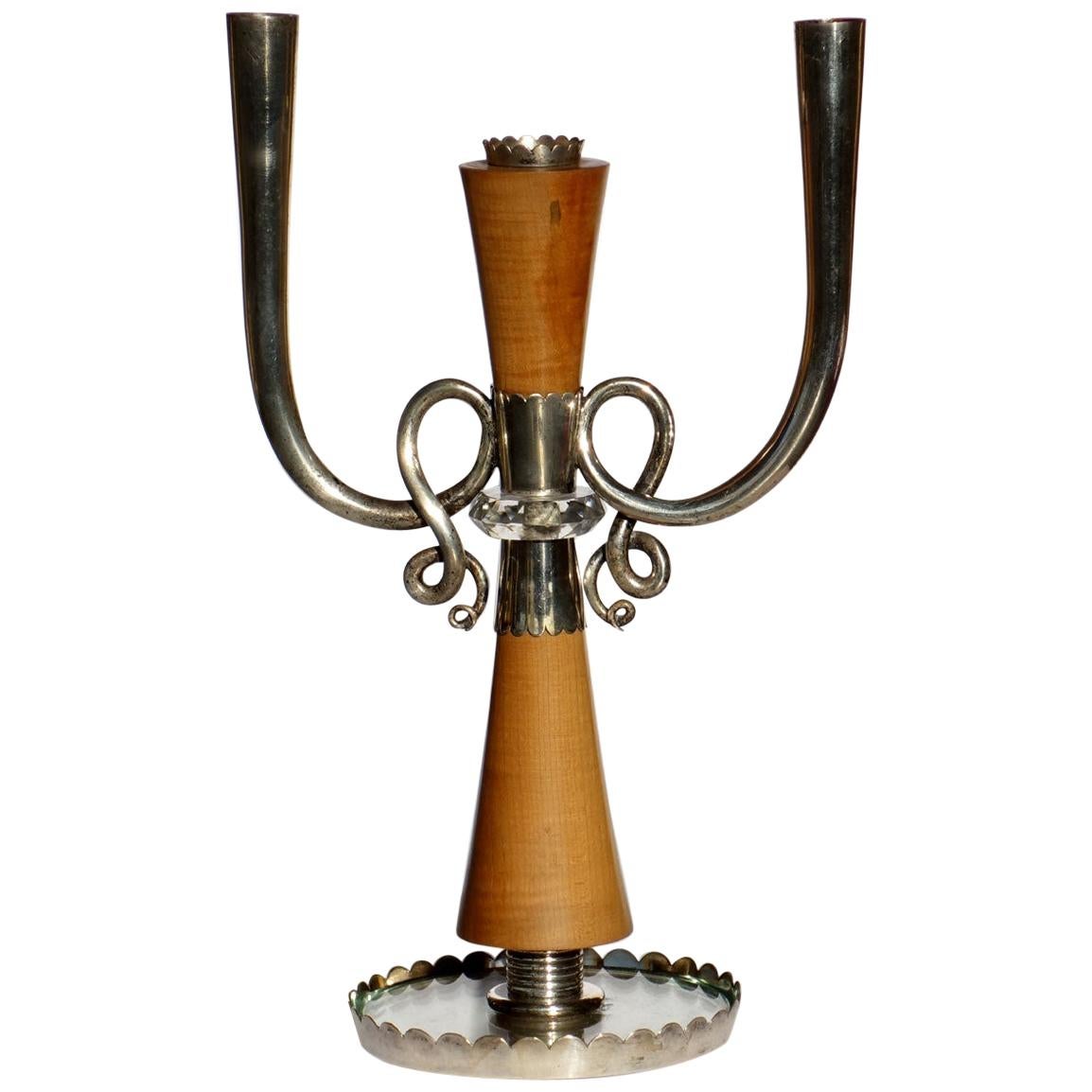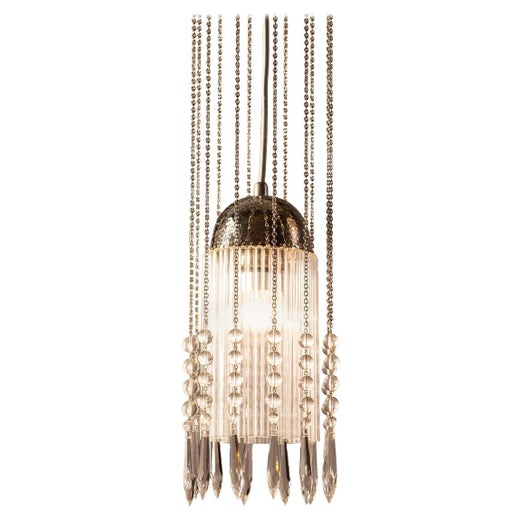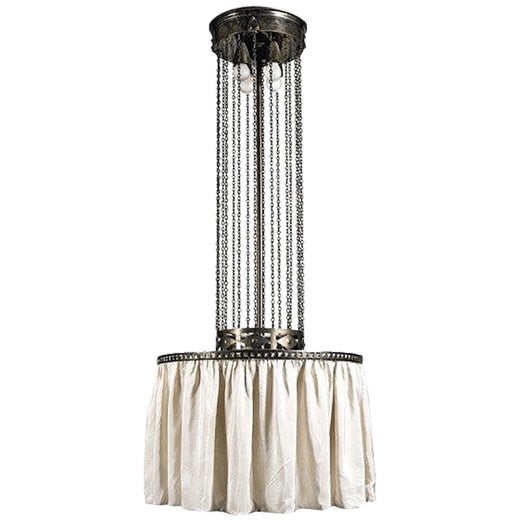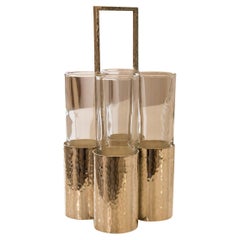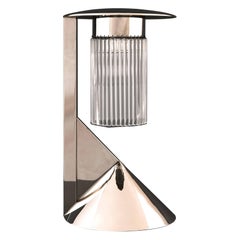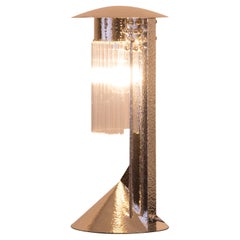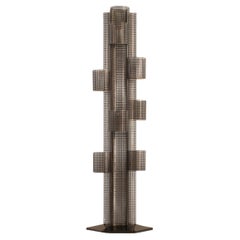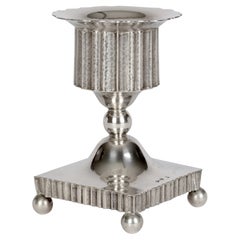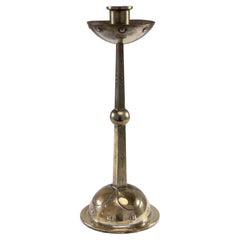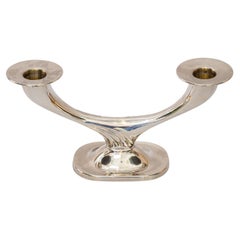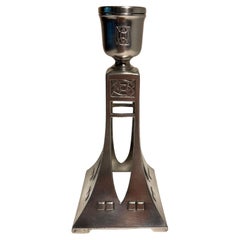Original, Hallmark. Massive Silver Candleholder, Koloman Moser Wiener Werkstätte
About the Item
- Creator:
- Dimensions:Height: 3.94 in (10 cm)Width: 2.37 in (6 cm)Depth: 2.37 in (6 cm)
- Style:Jugendstil (Of the Period)
- Materials and Techniques:
- Place of Origin:
- Period:1900-1909
- Date of Manufacture:1905
- Condition:
- Seller Location:Vienna, AT
- Reference Number:Seller: 70016 350101stDibs: LU1050241934592
Koloman Moser
Born in Vienna in 1868, Koloman Moser briefly attended trade school, honoring his father’s wish to see him in commerce. But he soon surrendered to his artistic inclinations, enrolling in 1885 in Vienna’s Academy of Fine Arts, where he studied painting.
When his father died unexpectedly in 1888, leaving the family in financial straits, Moser (1868–1918) helped out by doing illustrations for books and magazines. Meanwhile, he continued his painting studies, at the academy and then at the School of Arts and Crafts, starting in 1892. That was also the year that Moser, along with other young artists revolting against the Viennese art world’s devotion to naturalism, formed the Siebner Club, the precursor to the Vienna Secession.
Moser’s introduction during his last term at school to Gustav Klimt’s Allegory of Sculpture proved a turning point for the young artist. Christian Witt-Dörring, guest curator of the 2018–19 exhibition “Koloman Moser: Universal Artist between Gustav Klimt and Josef Hoffmann” at the MAK in Vienna, noted a change in the artist’s drawing style. “Primarily inspired by the art of Japan, [Klimt] introduces new paper sizes, fragmented image details, and an emphasis on the line as opposed to the surface,” wrote Witt-Dörring in the exhibition’s catalogue.
A year later, in 1897, Moser together with Klimt, Carl Moll, Joseph Olbrich and Josef Hoffmann founded the Vienna Secession, a union of artists and designers determined to upend Austria’s artistic conservatism. The members were committed to making total works of art: Gesamtkunstwerken. Looking to the English Arts and Crafts Movement, with its guiding principle of unity of the arts, the group attempted to bring art back into everyday life and introduce a local modernism to fin-de-siècle Vienna. Moser, whose membership in the club also afforded him entry into upper-class Viennese society, turned his back on oil painting and forged ahead with Gesamtkunstwerk.
Moser created everything from exhibition design to facade ornamentation for the Secession Building, to graphic materials. Moser also produced posters and advertisements in his “modern style” for various companies. In 1898, he presented his first decor pieces, including hand-knotted rugs and cushion covers. In 1899, Moser began what would become a lifelong professorship at the School of Arts and Crafts. His repertoire now expanded to include furniture, ceramics and patterns like his trademark checkerboard design. He also moved into scenography and fashion and established himself as an interior designer.
The artist decorated his own home in 1902, after which he received a series of important commissions, notably the villa of textile industrialist Fritz Waerndorfer. It was Waerndorfer who provided the financial support that enabled Moser and Hoffmann in 1903 to found the Wiener Werkstätte, a platform for fully realizing their ideal of Gesamtkunstwerk. Two years later, Moser married Edith Mautner von Markhof, the daughter to one of Austria’s great industrial barons, and his work thrived.
In 1907, the Wiener Werkstätte ran into financial trouble. Losing faith in the unity of the arts and disillusioned with the group’s dependency on wealthy patrons like Waerndorfer, Moser left the Werkstätte. He returned to his original discipline, painting, which he continued to practice until his untimely death from cancer, in 1918.
Today, Koloman Moser’s work, from his metal vases to his jewelry to his interiors, remains sought-after and revered. Browse Moser's radically modern creations at 1stDibs.
Wiener Werkstätte
Born from the Vienna Secession art movement in Austria during the early 20th century, the Wiener Werkstätte helped to cement Art Nouveau style and culture in Viennese art. Wiener Werkstätte furniture included armchairs, cabinets and table lamps, with production extending to other crafts such as ceramics, jewelry and fashion. The Werkstätte also boasted a large graphic arts department, which created nearly 1,000 unique postcards during the organization’s run.
Austrian architect Josef Hoffmann, painter Koloman Moser and industrialist Fritz Waerndorfer established the collective in opposition to the dominant trends in Viennese art. The artistic community was then largely directed by the Association of Austrian Artists, which had firm control over the creation and distribution of Austrian art. The collective’s style pushed back against traditional artistic preferences, instead favoring clear, bold lines and often-exaggerated, vibrant colors.
Employing over 100 people, including several master craftsmen, the Werkstätte formed relationships and alliances with a number of firms and stores, which sold and commissioned new work from the workshop.
As the Wiener Werkstätte’s mission aligned with emerging British sensibilities regarding art, many British artists worked closely with the collective. Some major Austrian artists collaborated with the collective, without officially joining, such as painter Gustav Klimt.
The Werkstätte’s artistic range was extensive and eclectic, with the organization producing a wide variety of furniture. In 1932, the global economic collapse forced it to shut down. With the outbreak of WWII soon to follow, the Wiener Werkstätte never reopened. Its legacy lived on, however, in the numerous artists and craftspeople who carried forward its commitment to progressive cultural and creative endeavors.
On 1stDibs, find antique Wiener Werkstätte lighting, seating and storage pieces.
- ShippingRetrieving quote...Shipping from: Vienna, Austria
- Return Policy
More From This Seller
View All2010s Austrian Jugendstil Serving Pieces
Silver Plate, Brass
2010s Austrian Jugendstil Table Lamps
Crystal, Brass
2010s Austrian Jugendstil Table Lamps
Silver Plate, Brass
2010s Austrian Jugendstil Planters and Jardinieres
Iron
2010s Austrian Vienna Secession Table Lamps
Brass
2010s Austrian Jugendstil Table Lamps
Brass
You May Also Like
Vintage 1910s German Jugendstil Candlesticks
Silver
Early 20th Century German Arts and Crafts Candlesticks
Silver Plate
Vintage 1920s German Art Deco Candelabras
Brass
Antique Early 1900s German Art Nouveau Candlesticks
Britannia Standard Silver, Lead, Tin
Early 20th Century European Art Deco Candlesticks
Metal
Vintage 1940s Italian Art Deco More Candle Holders
Silver Plate
